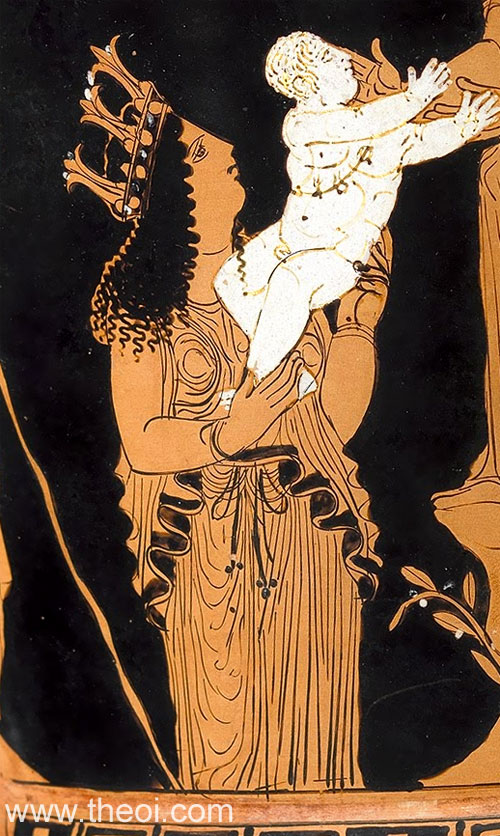What I Learned from My Mother
After Julia Kasdorf
After Julia Kasdorf
To thy own
self be true.
Hard work pays off.
Do your best always.
If you make a promise, keep it.
Don’t give up.
Don’t let others get in your way.
Hard work pays off.
Do your best always.
If you make a promise, keep it.
Don’t give up.
Don’t let others get in your way.
Don’t be
smart.
Don’t learn too much
or stop being the class clown,
that could get intimidating,
that could make it necessary
to miss the parent/teacher conferences.
Don’t learn too much
or stop being the class clown,
that could get intimidating,
that could make it necessary
to miss the parent/teacher conferences.
You can
stay in a relationship
for twenty-eight years
with a drunken sop
mostly because, up against him,
you look strong and competent.
for twenty-eight years
with a drunken sop
mostly because, up against him,
you look strong and competent.
When your
drunken husband dies
you take over the restaurant supply business.
You borrow lots of money
because your suppliers ship everything
COD since a woman, in 1964,
shouldn’t be running a business.
you take over the restaurant supply business.
You borrow lots of money
because your suppliers ship everything
COD since a woman, in 1964,
shouldn’t be running a business.
You put up
with your customers’ crazy demands.
You repair their broken ranges
and refrigeration units on Sunday.
The customer is always right.
You make your business
a tremendous success
and sell it to your main competitor
in Denver. You date him,
but drop him when he suggests
a romantic week in Sicily.
You never leave the Catholic Church
even though it totally abandoned you.
You repair their broken ranges
and refrigeration units on Sunday.
The customer is always right.
You make your business
a tremendous success
and sell it to your main competitor
in Denver. You date him,
but drop him when he suggests
a romantic week in Sicily.
You never leave the Catholic Church
even though it totally abandoned you.
You can
ride an emotional roller coaster
all your life, you can be tremendously generous,
and fly into uncontrollable rages
in unpredictable seconds.
You can call your son a shit-ass,
a son-of-a-bitch, then you can
tell him you love him.
all your life, you can be tremendously generous,
and fly into uncontrollable rages
in unpredictable seconds.
You can call your son a shit-ass,
a son-of-a-bitch, then you can
tell him you love him.

Gaea and Erichthonius-- Manner of Kadmos Painter
Gaia was the Greek goddess of the earth. She was one of the primoridal elemental deities (protogenoi) born at the dawn of creation. Though without parentage herself, she was the great mother of all creation -- the heavenly gods were descended from her through her union with Ouranos (Uranus, Sky), the sea-gods from her union with Pontos (Sea), the Gigantes (Giants) from her mating with Tartaros (the Pit), and mortal creatures, including Erichthonius, born directly from her earthy flesh. After deposing the usurper Amphictyon (who was also autochthonous) he became the 4th king of Athens. Because he was lame he invented the quadriga (4-horse chariot). He also taught his people to yoke horses, to till the earth with a plow, and to smelt silver. He also established the Panathenaic games which included athletic contests and poetic and musical competitions (rhapsodic recitation of Homeric poetry, instrumental music on the aulus and cithara, and singing to the accompaniment of those instruments). The Kadmos painter was a 4th-century red-figure vase-painter who acquired his cognomen from John Davidson Beazley, a 20th-century professor of classical archaeology and art at the University of Oxford who in 1942 adapted the art-historical method initiated by Giovanni Morelli in 1880 to attribute the specific "hands" (style) of specific workshops and artists by scrutinizing diagnostic minor details that revealed the artists' scarcely conscious shorthand and conventions for portraying features such as ears. The "Kadmos Painter" was named for a vase in Berlin that portrayed the founder of Thebes who adapted the Phoenician alphabet to Greek. Julia Kasdorf is a Mennonite poet who teaches at Pennsylvania State University. COD (cash on delivery) is a system by which the receiver of a package must pay for the contents before being able to accept it.
ReplyDelete